1. La Tomatina – Buñol, Spain

La Tomatina, held every year in Buñol, Spain, is the world’s largest tomato fight. While tourists flock to the event for the chaos and fun of throwing tomatoes, the festival holds a much deeper significance for the locals. It began in the mid-20th century, possibly sparked by a local quarrel, but quickly grew into an annual tradition that represents the community’s spirit. The festival is held on the last Wednesday of August, and people come from around the world to hurl squishy tomatoes at each other, resulting in a massive red sea in the streets.
For the people of Buñol, La Tomatina is more than just a playful activity; it’s a way to come together as a town. It’s a time to forget daily worries and bond with neighbors and visitors alike. The event has also become an important economic driver for the town, boosting tourism and local businesses. Though tourists may simply enjoy the spectacle, for the locals, La Tomatina is a long-standing symbol of unity, celebration, and community pride.
2. Boryeong Mud Festival – Daecheon, South Korea
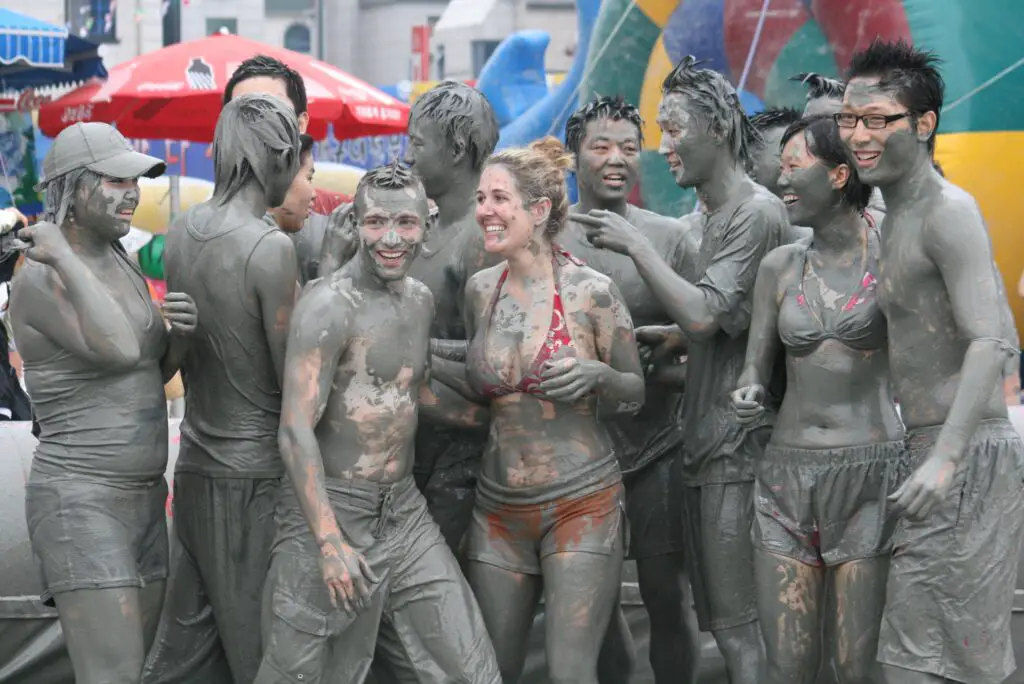
Held annually in Daecheon, South Korea, the Boryeong Mud Festival is widely known for its mud-related activities and chaotic fun. While visitors often see it as an opportunity to engage in playful mud fights, the festival has a deeper connection to health and wellness for the locals. The festival, which began in 1998, was initially created to promote the therapeutic benefits of the mud found in the region, which is rich in minerals. Tourists from around the world come to participate in mud wrestling, mud sliding, and even mud spa treatments.
For the people of Daecheon, the Mud Festival is more than just a fun event – it’s an annual celebration of local culture and the healing properties of their famous mud. Beyond the muddy antics, the festival is also an important promotional event for the town’s mud cosmetics industry. It’s a time for locals to showcase their products and culture, while also fostering a sense of community. As one of the most anticipated events of the year, the festival serves as a vital connection between Daecheon’s heritage and its growing popularity on the global stage.
3. Up Helly Aa – Lerwick, Shetland Islands, Scotland
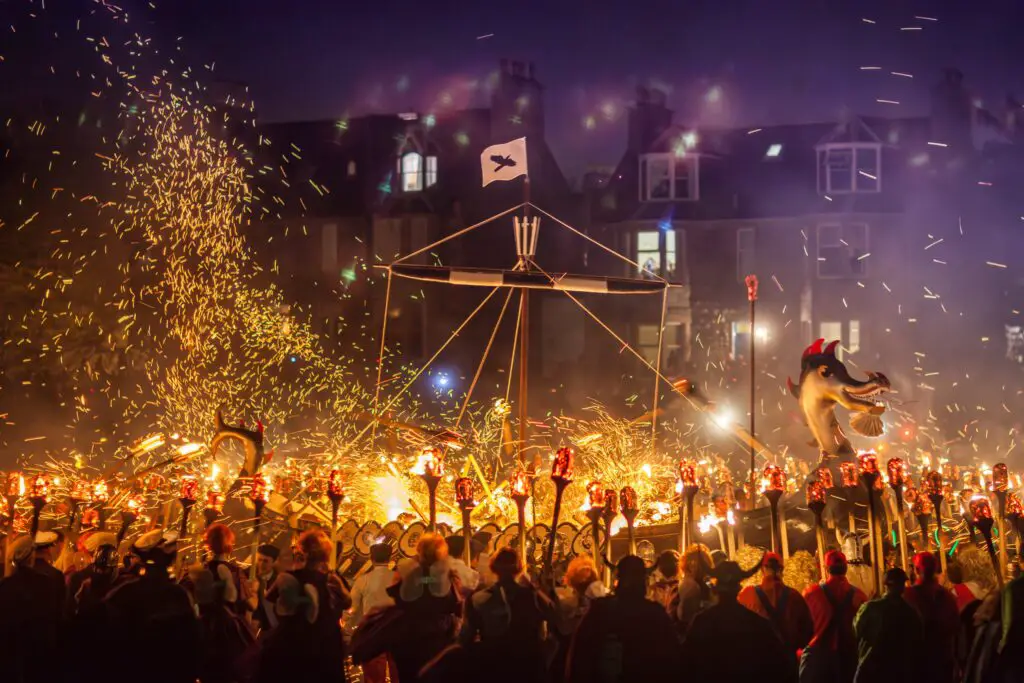
Up Helly Aa, the Viking fire festival held annually in Lerwick, Shetland Islands, celebrates the region’s Norse heritage with a blend of fire and history. While many tourists are drawn to the spectacle of the torches and Viking costumes, the festival runs deeper for locals, who see it as an essential celebration of their roots. The event, which takes place every January, features a torch-lit procession and the burning of a Viking longship. It honors the historical connection between the Shetland Islands and the Vikings, making it a deeply meaningful occasion for the people of Lerwick.
For the locals, Up Helly Aa is a unique mix of ancient tradition and community spirit. It’s a time when the entire town comes together to participate in months of preparation, rehearsing Viking costumes and practicing for the procession. The festival is also a fundraiser for local charities, further strengthening the bonds within the community. More than just a spectacle for outsiders, Up Helly Aa is an occasion that brings locals together to honor their Viking ancestors, preserving a vital part of their cultural identity.
4. La Patum de Berga – Berga, Catalonia, Spain
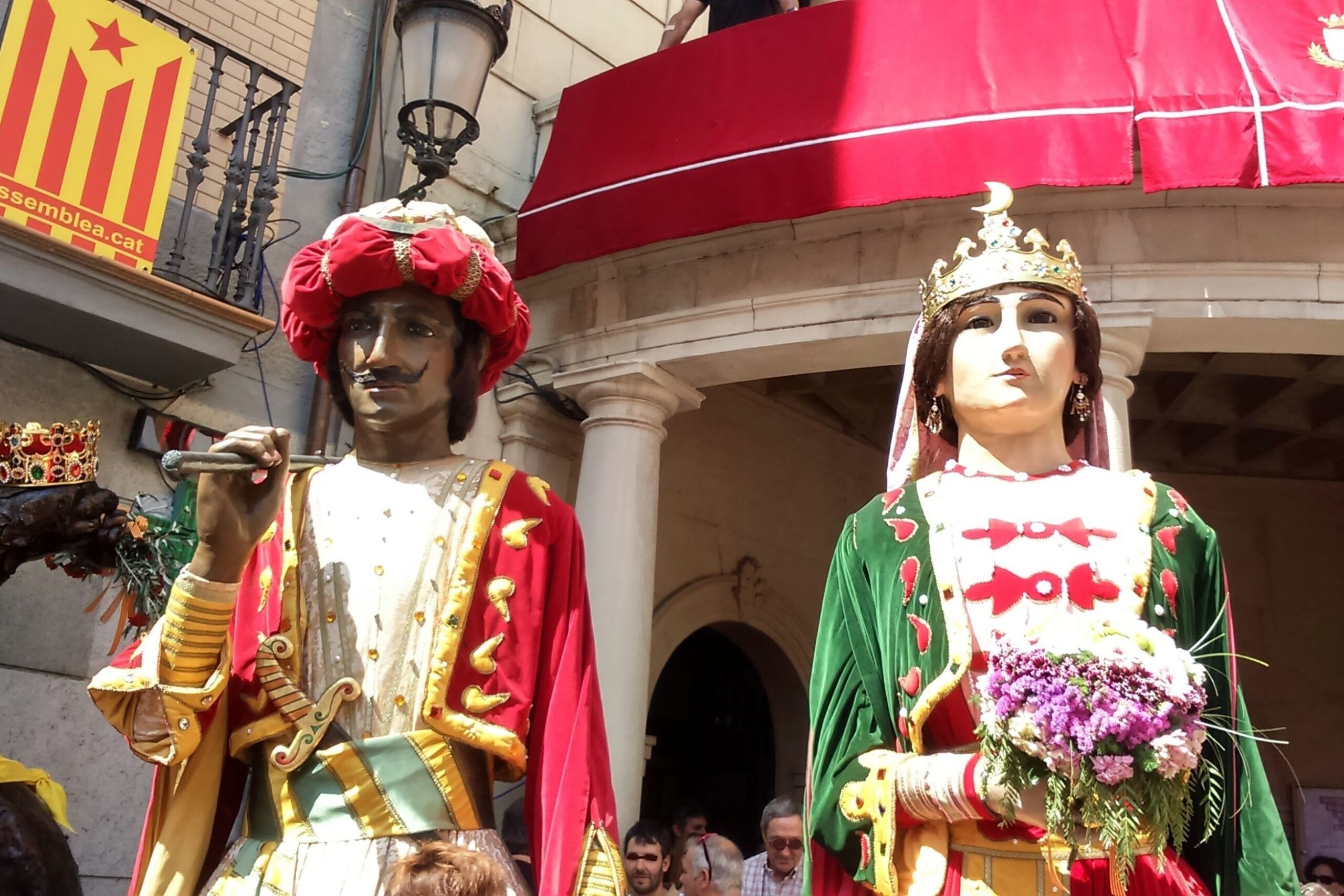
La Patum de Berga, a UNESCO-recognized festivity held in the town of Berga in Catalonia, Spain, is often seen by tourists as an energetic street party. However, for the locals, it is a deeply rooted celebration of culture and religious tradition. The festival takes place during the week of Corpus Christi and features parades, fireworks, and effigies. La Patum de Berga has origins dating back to the 18th century and combines both spiritual and celebratory elements, making it a key part of the town’s heritage.
For the people of Berga, the festival is a sacred tradition that symbolizes the triumph of good over evil and reflects the town’s Catholic roots. The processions, fireworks, and masked figures represent both historical and mythical themes, blending religious devotion with joyful festivity. Though visitors often come for the chaos, for locals, La Patum is a moment of deep pride and connection to their religious and cultural past. It’s a time for the community to celebrate together, while also honoring the longstanding traditions that make Berga unique.
5. Hadaka Matsuri – Various Locations, Japan
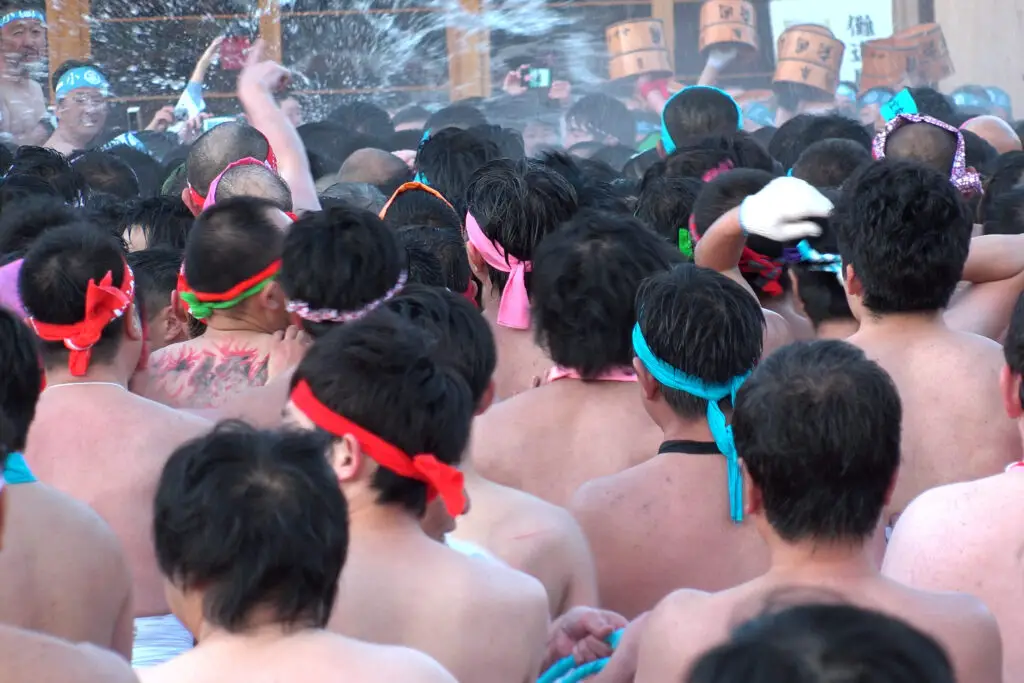
Hadaka Matsuri, or the “Naked Festivals,” are held in various locations across Japan, with the most famous event taking place in Saidaiji, Okayama. To tourists, these festivals might seem like a bizarre spectacle of half-naked men running through the streets, but to locals, it’s a deeply meaningful event rooted in spiritual purification. The festival takes place each January and involves participants, clad only in loincloths, attempting to catch sacred sticks thrown by priests. These sticks are believed to bring good fortune for the coming year, making the festival both a test of endurance and faith.
For the Japanese, Hadaka Matsuri represents a spiritual cleansing and renewal. The tradition dates back to the 8th century and was originally designed to help participants purify themselves of evil spirits. The festival is not only about physical endurance but also about the connection between the participants, their community, and their faith. While it might appear as an eccentric and uncomfortable challenge to outsiders, Hadaka Matsuri is a cherished and vital part of local life in Japan, marked by a deep sense of purpose and devotion.
6. Beltane Fire Festival – Edinburgh, Scotland
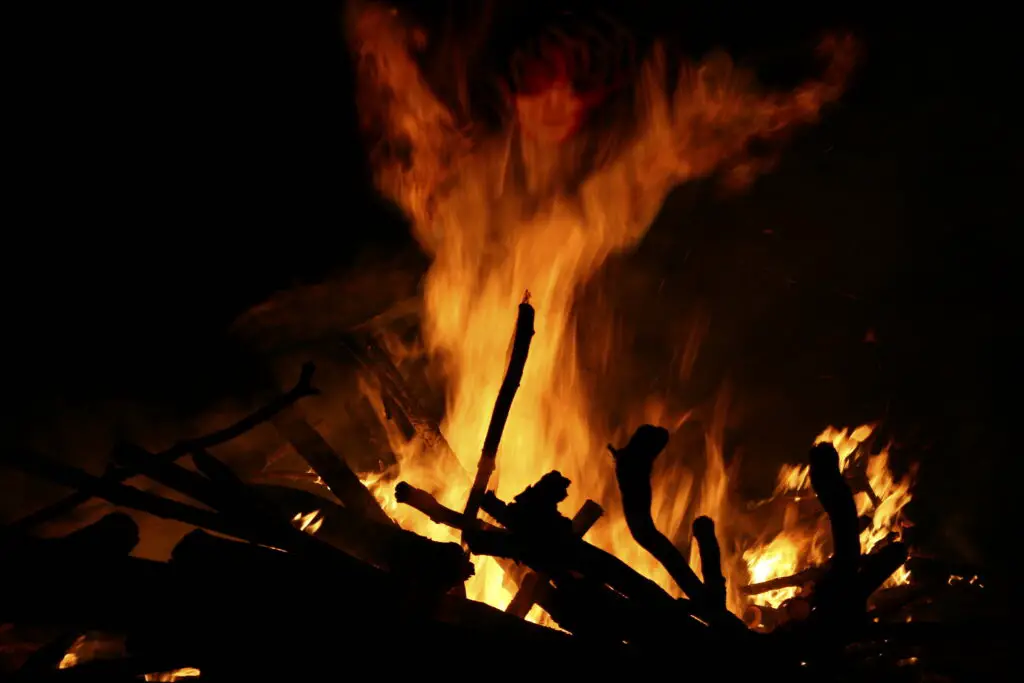
The Beltane Fire Festival in Edinburgh, Scotland, is a modern celebration of ancient Celtic traditions. While tourists may perceive it as a whimsical pagan gathering, locals see it as a deeply meaningful event that honors the changing of the seasons. Held on the night of April 30th, the festival marks the beginning of summer with a procession, fire displays, and performances. The event draws inspiration from the ancient Celtic festival of Beltane, which symbolized fertility and the arrival of the warmer months.
For Edinburgh residents, the Beltane Fire Festival is a celebration of nature and human connection. The night features an array of symbolic characters representing different aspects of nature, mythology, and human experience. The festival has grown over the years, attracting a mix of local participants and international visitors. For the locals, it’s a time to connect with their cultural heritage and engage in a collaborative, artistic expression. The Beltane Fire Festival has become a significant event in Edinburgh’s cultural calendar, blending ancient traditions with modern creativity.
7. Holi – Various Locations, India
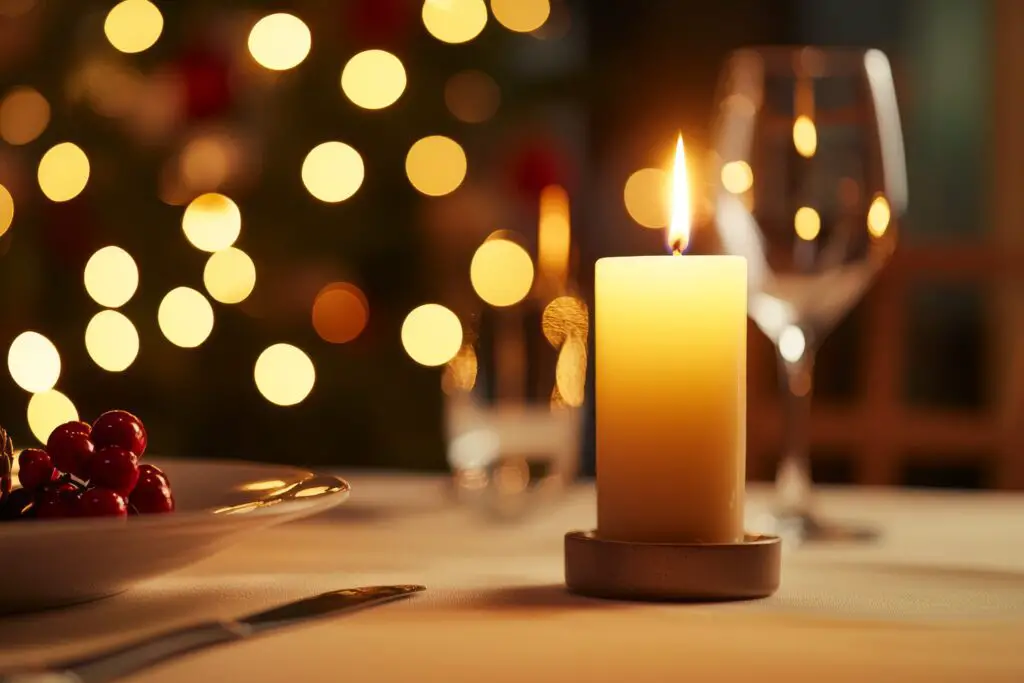
Holi, India’s Festival of Colors, is celebrated across the country and by Indian communities worldwide. While tourists often see it as a lively color-throwing event, for locals, Holi is much more than just fun; it’s a celebration of love, unity, and the triumph of good over evil. The festival, which takes place in March, is rooted in Hindu mythology and commemorates the victory of the god Vishnu over the demon king Hiranyakashipu. Celebrants throw colored powders at each other, dance, sing, and feast as part of a joyous, uninhibited celebration.
For the people of India, Holi is a deeply spiritual occasion. It’s not just about the color and chaos; it’s about forgiving past grievances, reconnecting with loved ones, and celebrating new beginnings. Holi fosters a sense of unity by transcending social and economic barriers, as people from all walks of life come together to celebrate. The festival also carries a message of renewal and hope, reinforcing the belief that love and good will always prevail over hate. It’s a moment for people to release the past and embrace the future with joy and optimism.
8. Oktoberfest – Munich, Germany
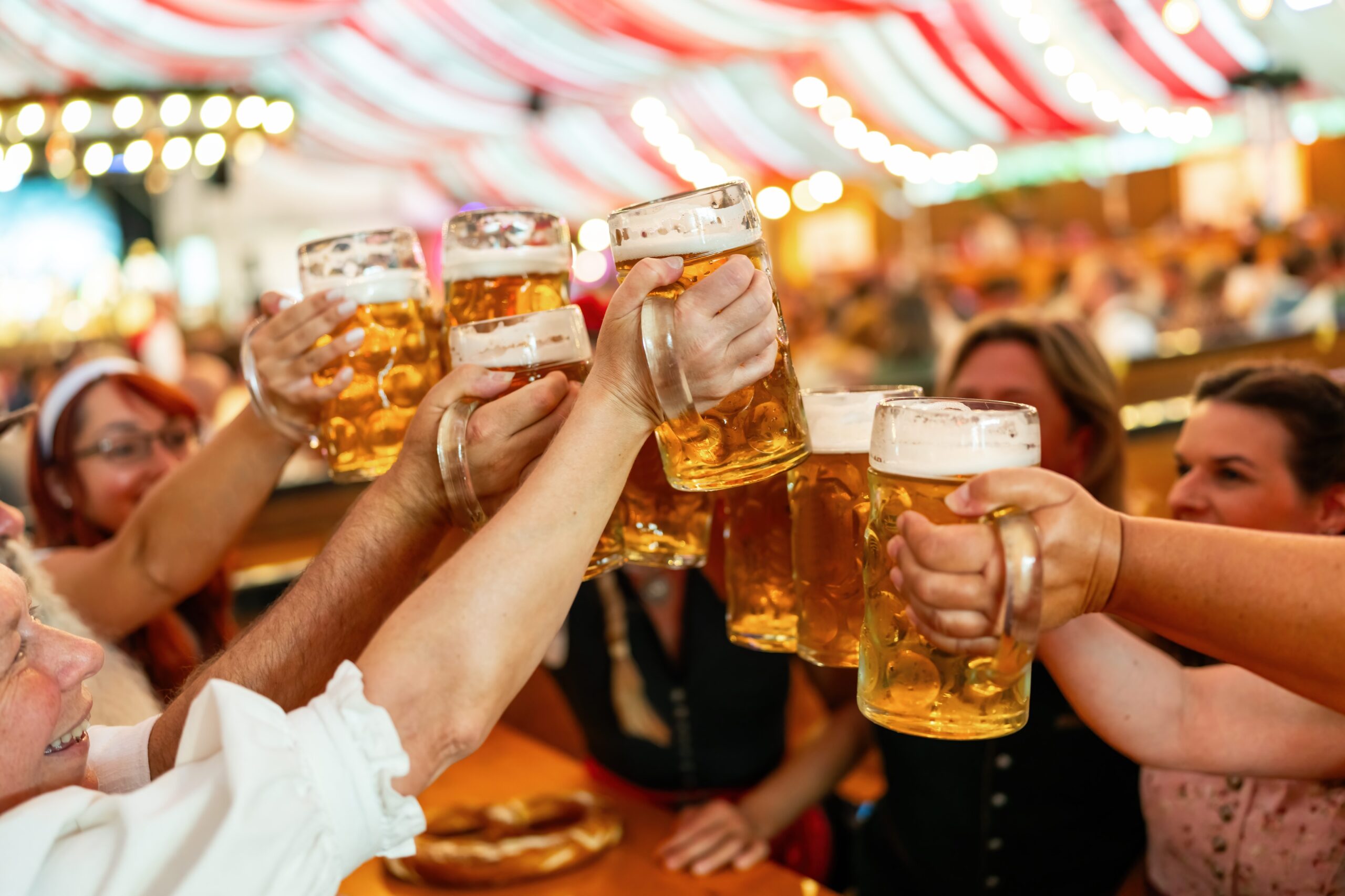
Oktoberfest in Munich, Germany, is the largest beer festival in the world, attracting millions of visitors each year. While tourists flock to the event for the beer and festivities, for the locals, Oktoberfest is much more than just a party. The festival, which began in 1810 as a celebration of a royal wedding, is now a massive celebration of Bavarian culture. The event features traditional music, food, and, of course, beer, with locals and visitors alike donning their finest Dirndls and Lederhosen.
For Munich residents, Oktoberfest is a time to showcase Bavarian hospitality, craftsmanship, and culture. It’s a tradition that connects the community to its roots, with locals taking pride in their heritage. The event also serves as a significant economic driver for the city, supporting local breweries, restaurants, and businesses. For the people of Munich, it’s a cherished time to come together, celebrate their traditions, and welcome the world to their city. Though it may seem like just a beer festival to outsiders, for locals, Oktoberfest is a time of cultural pride and unity.
9. Songkran – Thailand
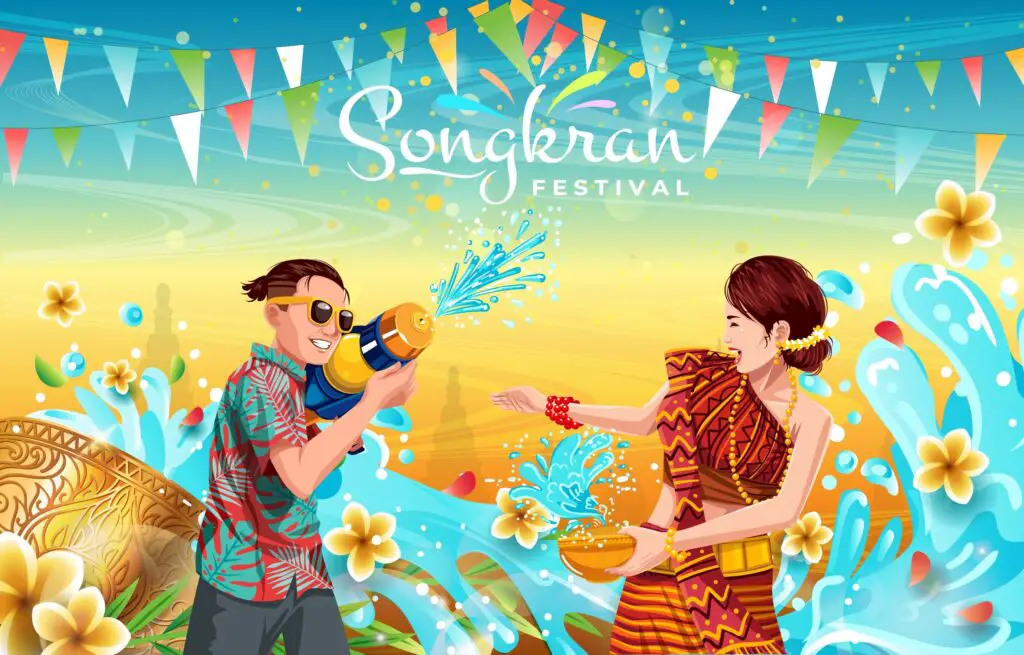
Songkran, Thailand’s traditional New Year celebration, is famous for its water fights and vibrant street parties. While tourists often associate the event with chaotic water fights, locals view it as a time to honor their elders, cleanse the past year’s misfortunes, and celebrate new beginnings. Held every April, Songkran involves water fights in the streets, temple visits, and family gatherings. The water symbolizes the washing away of bad luck, while traditional ceremonies pay respects to the elderly and ancestors.
For the Thai people, Songkran is a deeply spiritual festival that focuses on family and renewal. The tradition has its roots in Buddhist rituals, where water is poured over Buddha statues for blessings and purification. It’s also a time for families to reunite, visit relatives, and participate in community rituals. For the people of Thailand, Songkran is a blend of joy, reverence, and connection with loved ones, making it more than just a water fight. It’s a time to refresh both physically and spiritually, leaving behind any negativity and starting the year anew.
10. Carnival – Rio de Janeiro, Brazil
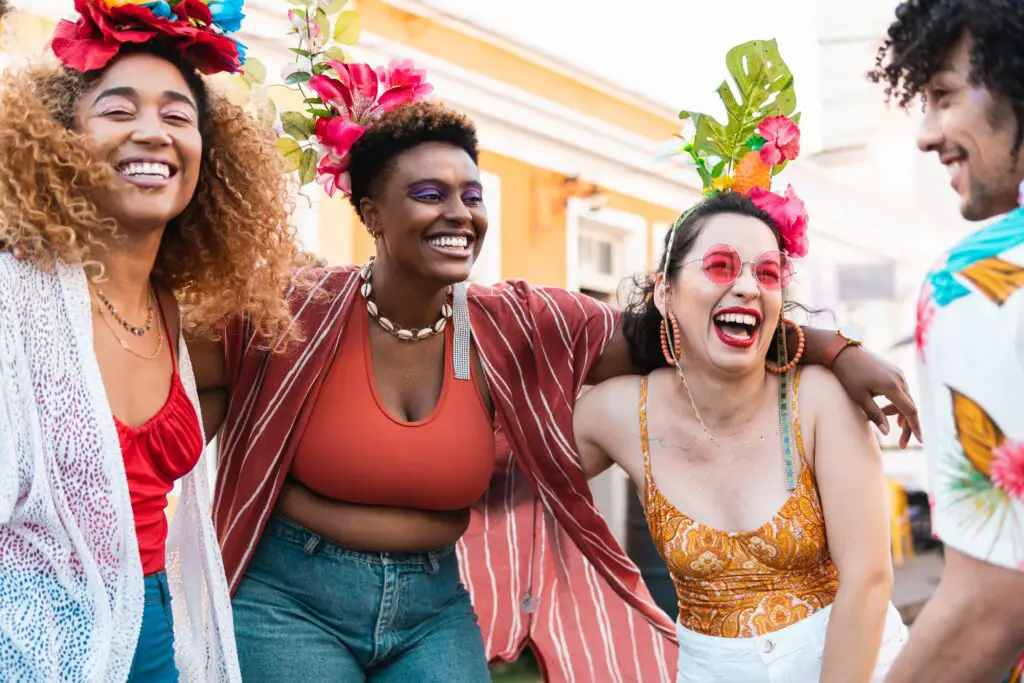
Carnival in Rio de Janeiro is one of the most famous festivals in the world, known for its samba parades and vibrant street parties. While tourists come to witness the spectacle, locals view Carnival as a celebration of their Afro-Brazilian culture and community spirit. The festival has its roots in African traditions brought to Brazil by enslaved people, and over time, it has become a massive cultural event. For the people of Rio, Carnival is a time to express their creativity, celebrate their heritage, and showcase the music and dance that define Brazilian culture.
For locals, Carnival is not just about the parades and festivities; it’s about unity, pride, and tradition. The samba schools, which participate in the famous parades, are community-based organizations that spend months preparing for the event. Carnival also brings together people from different social and economic backgrounds, fostering a sense of togetherness. While it attracts millions of tourists, for the people of Rio, Carnival is a deeply personal and cultural expression, a celebration of the spirit and resilience of Brazil’s people.
11. Obon – Japan
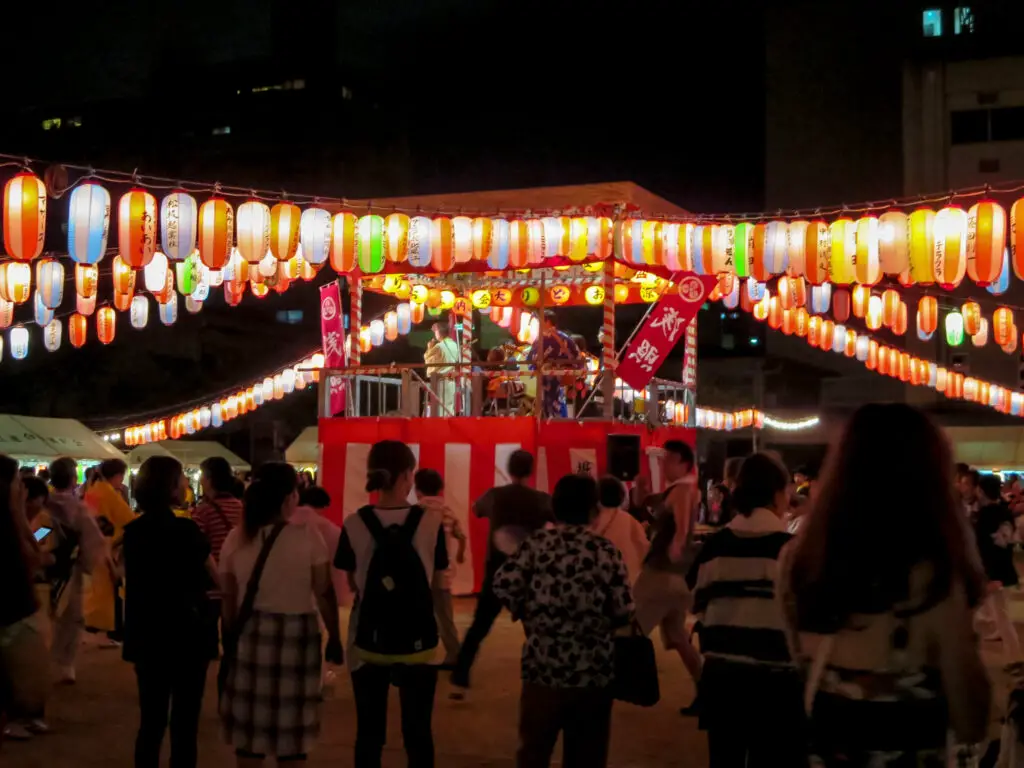
Obon, celebrated in Japan during mid-August, is a time to honor the spirits of ancestors. While tourists might view it as a solemn event, for locals, Obon is a moment of spiritual reflection, family connection, and remembrance. The festival involves visiting family graves, offering food to spirits, and participating in traditional Bon Odori dances. The roots of Obon lie in a Buddhist legend about a disciple who sought to ease the suffering of his deceased mother, leading to the tradition of honoring the dead.
For the Japanese, Obon is more than just a ritual; it’s a time to come together as a family and remember loved ones who have passed. Many people travel long distances to be with their families during Obon, as it serves as a reunion time. The festival is marked by lantern-lit ceremonies and the return of spirits to their homes, followed by a joyful celebration of life. For locals, Obon is a sacred occasion that reconnects them with their ancestors and strengthens the bonds within their communities.
12. Inti Raymi – Cusco, Peru
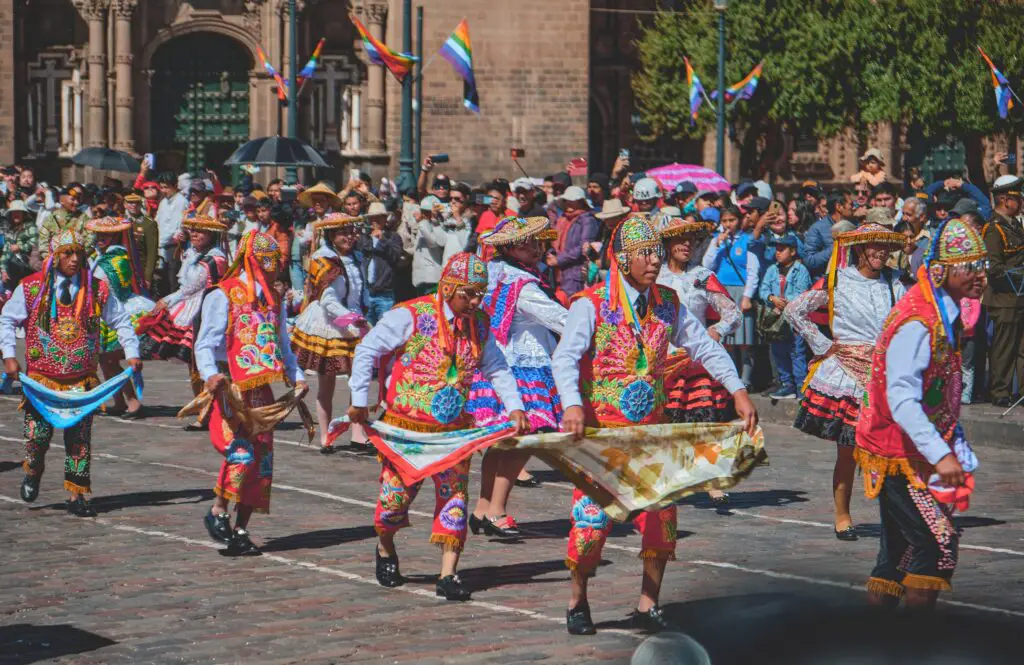
Inti Raymi, the Festival of the Sun, is an ancient Incan celebration held every year in Cusco, Peru. While tourists often view it as a historical performance, for locals, it is a sacred ritual honoring the sun god, Inti. Held on June 24th, the festival coincides with the winter solstice in the Southern Hemisphere and is marked by a reenactment of Incan ceremonies. These include offerings to the sun, dances, and prayers, and the event is held at important Incan sites like Sacsayhuamán.
For the people of Cusco, Inti Raymi is a powerful expression of their indigenous heritage. It’s a time to connect with the traditions of their ancestors and reaffirm their spiritual beliefs. The festival has evolved into a major tourist attraction, but for locals, it is still a deeply personal and meaningful celebration. It’s a moment of unity and cultural pride, allowing the community to preserve and celebrate the ancient Incan traditions that shaped their identity.
13. Diwali – India
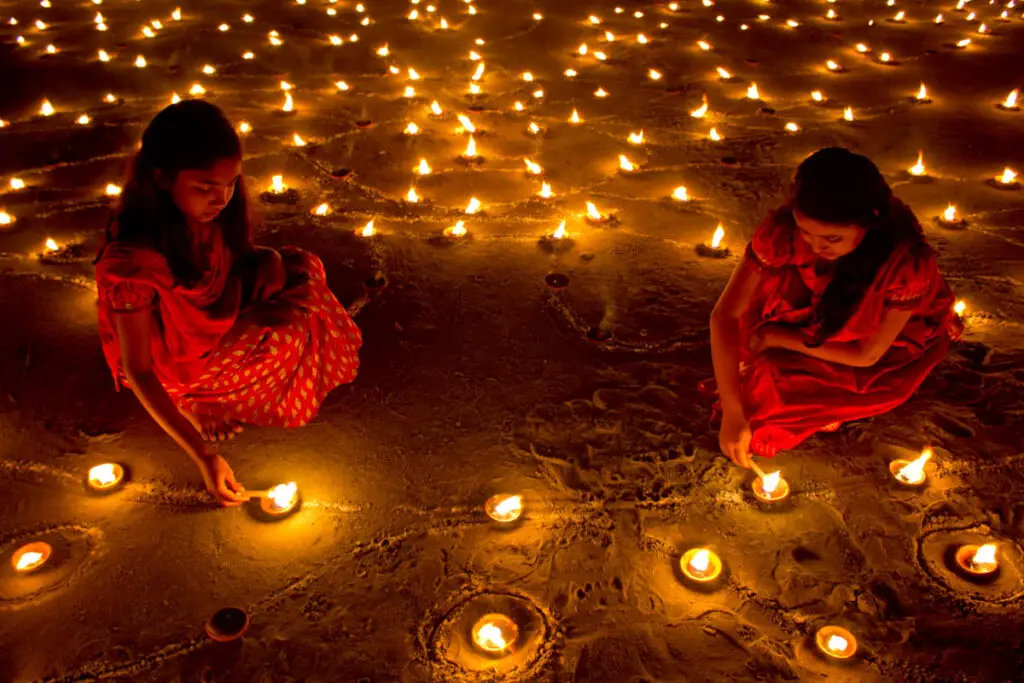
Diwali, the Festival of Lights, is celebrated across India and by Indian communities worldwide. While tourists may see it as a festival of fireworks and sweets, for locals, Diwali is a time of spiritual reflection, renewal, and family connection. The festival is rooted in Hindu mythology, commemorating the return of Lord Rama to his kingdom after defeating the demon king Ravana. It marks the victory of light over darkness and good over evil, and is celebrated with the lighting of oil lamps, the bursting of fireworks, and the sharing of festive foods.
For the people of India, Diwali is a deeply spiritual occasion that brings families and communities together. It’s also a time for cleaning and decorating homes, symbolizing the welcoming of prosperity and good fortune. The festival transcends religious and social boundaries, fostering unity and a sense of hope. Diwali is not just about celebration; it’s a time for reflection, gratitude, and the reaffirmation of one’s spiritual and cultural values. For the people of India, it is a radiant and joyful occasion that celebrates both light and life.
